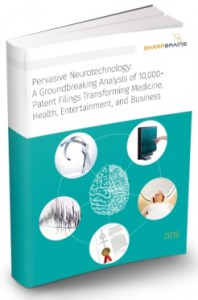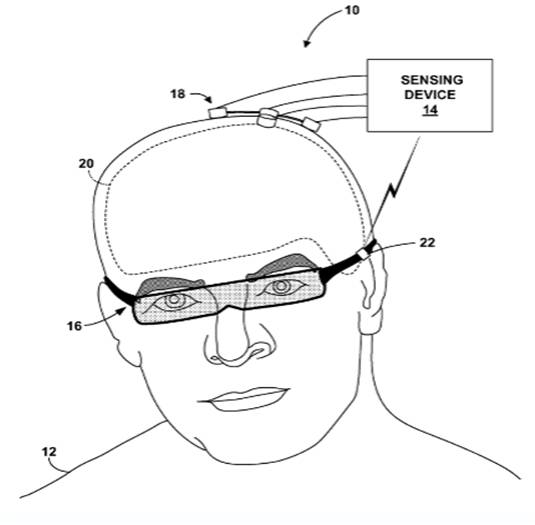Augmenting physiotherapy via neurofeedback and neurostimulation: Key neurotechnology patent #43
Today we are sharing a fascinating patent from Medtronic. (As mentioned, we are featuring 50 foundational Pervasive Neurotech patents, from older to newer by issue date)
U.S. Patent No. 8,121,694: Therapy control based on a patient movement state
- Assignee(s): Medtronic, Inc.
- Inventor(s): Gregory F. Molnar, Steven S. Gill, Keith A, Miesel, Mark S. Lent, Timothy J. Denison, Eric J. Panken, Carl D. Wahlstrand, Jonathan C. Werder
- Technology Category: Neuro-monitoring
- Issue Date: February 21, 2012
SharpBrains’ Take:
The ‘694 patent discloses methods to treat patients afflicted with movement or other neurodegenerative disorders through brain-signal feedback. Whereas conventional treatments involving neurostimulation to aid physical rehabilitation tediously require the patient to explicitly signal they are moving (or are about to move) in order to trigger stimulation, the ‘694 patent discloses methods for automatic detection of movement or planned movement of specific body parts or actions (e.g., arm movements, standing, walking, etc.) via EEG signals.
While the ‘694 patent discloses stimulation techniques with implantable devices, the claims do not explicitly recite invasive limitations and, therefore, the ‘694 patent may be reasonably construed as spanning invasive and non-invasive techniques. The inventive concept of combining neurofeedback and neurostimulation into physiotherapy, the extensive specification (including 28 illustration sheets and 29 pages of written disclosure), significant number of application forward citations (183 total citations at an average of 17 citations per year) and fairly broad independent claim coverage are among the factors making the ‘694 patent a key non-invasive neurotechnology patent.
Abstract:
A movement state of a patient is detected based on brain signals, such as an electroencephalogram (EEG) signal. In some examples, a brain signal within a dorsal-lateral prefrontal cortex of a brain of the patient indicative of prospective movement of the patient may be sensed in order to detect the movement state. The movement state may include the brain state that indicates the patient is intending on initiating movement, initiating movement, attempting to initiate movement or is actually moving. In some examples, upon detecting the movement state, a movement disorder therapy is delivered to the patient. In some examples, the therapy delivery is deactivated upon detecting the patient is no longer in a movement state or that the patient has successfully initiated movement. In addition, in some examples, the movement state detected based on the brain signals may be confirmed based on a signal from a motion sensor.
Illustrative Claim 1. A method comprising:
- monitoring a bioelectrical brain signal from a brain of a patient;
- determining the brain signal indicates the patient is in a movement state, wherein the brain signal that indicates the patient is in the movement state results from a volitional patient movement or volitional intention to move;
- at a first time, controlling delivery of therapy to the patient based on determining the brain signal indicates the patient is in the movement state;
- at a second time following the first time, determining whether the patient is in the movement state; and
- controlling the delivery of the therapy to the patient based on whether the patient is in the movement state at the second time following the first time.
 To learn more about market data, trends and leading companies in the digital brain health space –digital platforms for brain/ cognitive assessment, monitoring and enhancement– check out this market report. To learn more about our analysis of 10,000+ patent filings, check out this IP & innovation neurotech report.
To learn more about market data, trends and leading companies in the digital brain health space –digital platforms for brain/ cognitive assessment, monitoring and enhancement– check out this market report. To learn more about our analysis of 10,000+ patent filings, check out this IP & innovation neurotech report.



